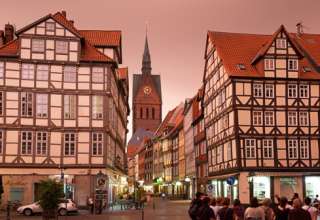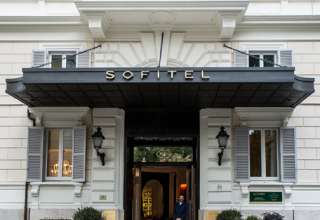During my first trip to Hamburg last year, I was so smitten with the astonishing Elbphilharmonie that I knew I had to return to this Hanseatic city and the celebrated concert hall for another opportunity to imbibe the heady grandeur of this splendid monument to music… and to do more of the things in Hamburg that I had not had time to do during my first visit. For part of my stay on this second sojourn, I chose the new Westin Hotel, which shares a footprint with the Elphi, as this symphony hall has been dubbed by locals.
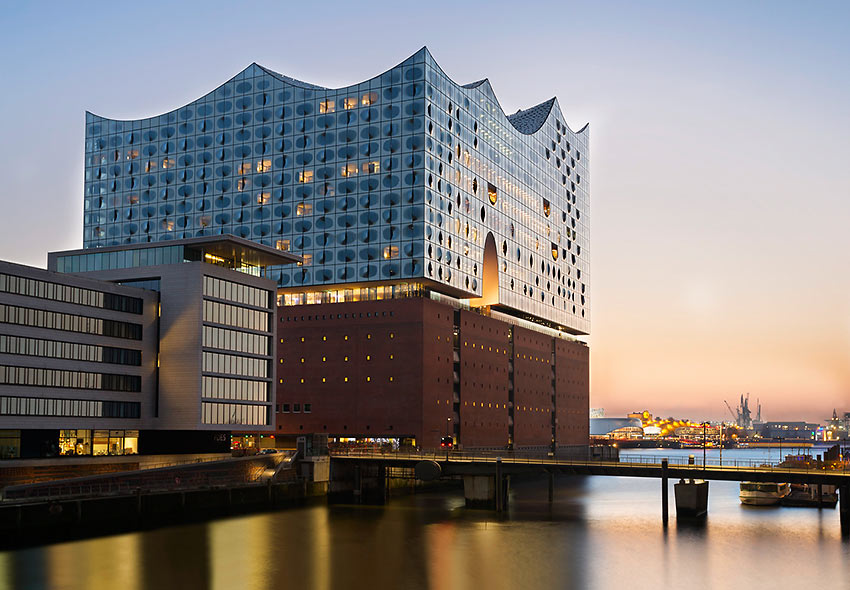
An ancient Kaispeicher (quay warehouse), the building was dramatically transformed (by Swiss-based architectural firm Herzog & de Meuron) by the new upper levels, where the hotel is situated, with its bold swaths of glistening, shimmering glass (over 1,000 panels), reflecting the water and the skyline.
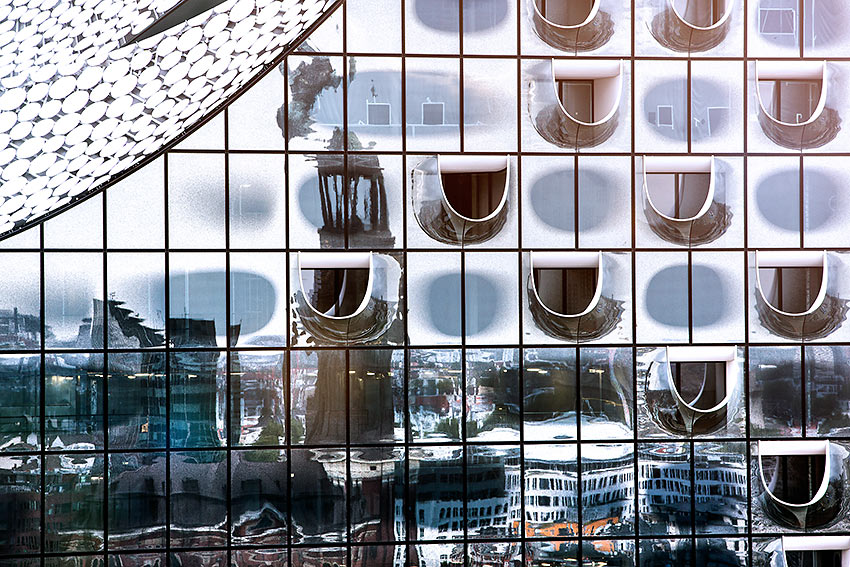
The structure is crowned by a concave, scalloped roof canopy, echoing the undulating waves below.
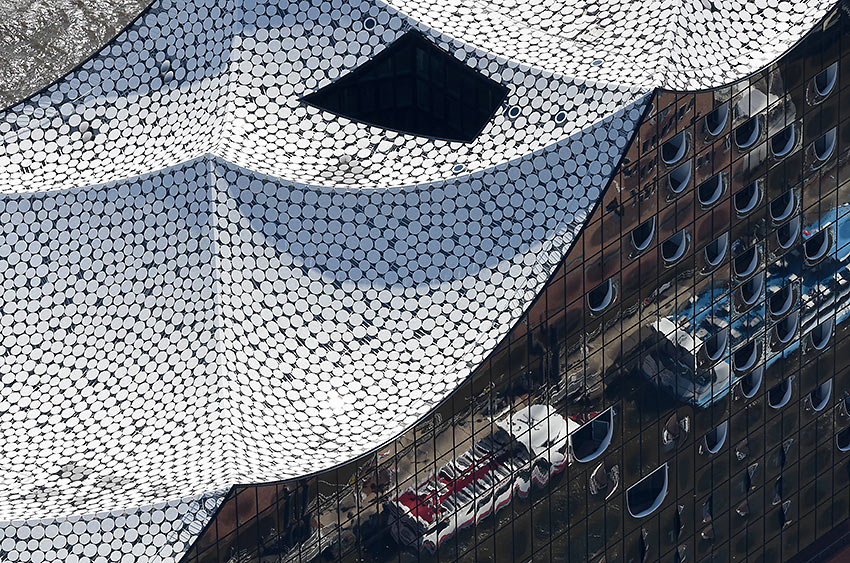
The imposing edifice is located on the western tip of Grasbrook Island in the Elbe, where peninsular ribbons of terra firma jut out into the always busy waterfront, creating canals that are transversed by bridges. The Westin and Elphi complex protrudes into the water like a majestic promontory.
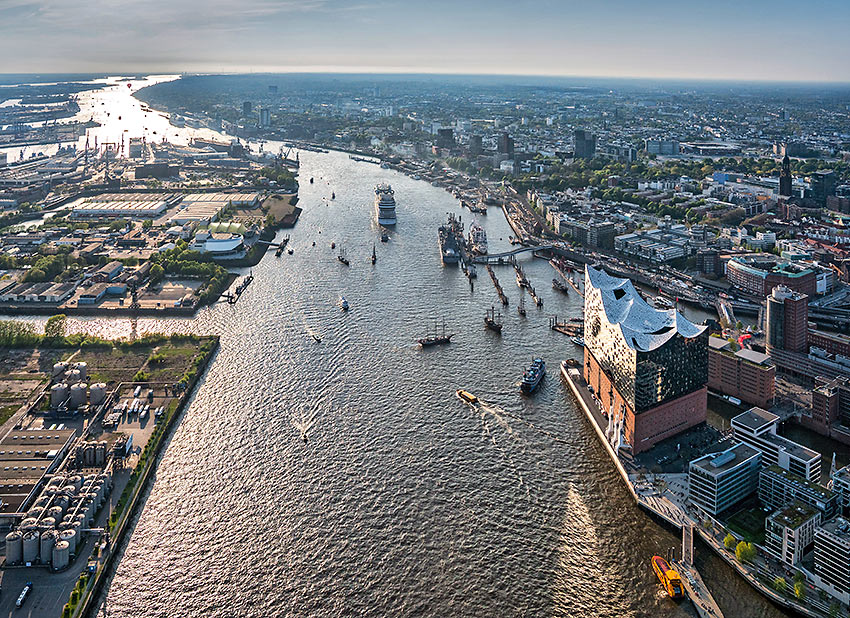
Part of the island is known as HafenCity — a model of urban renewal — that was established in 2008, dotted with welcoming cafes, trendy boutiques, hotels, office buildings, and residential areas. Another section of the island is the historic Speicherstadt (city of warehouses), once a repository for diverse cargoes of sugar, tea, tobacco, and cocoa, and today — since 2015 — a UNESCO World Heritage Site.
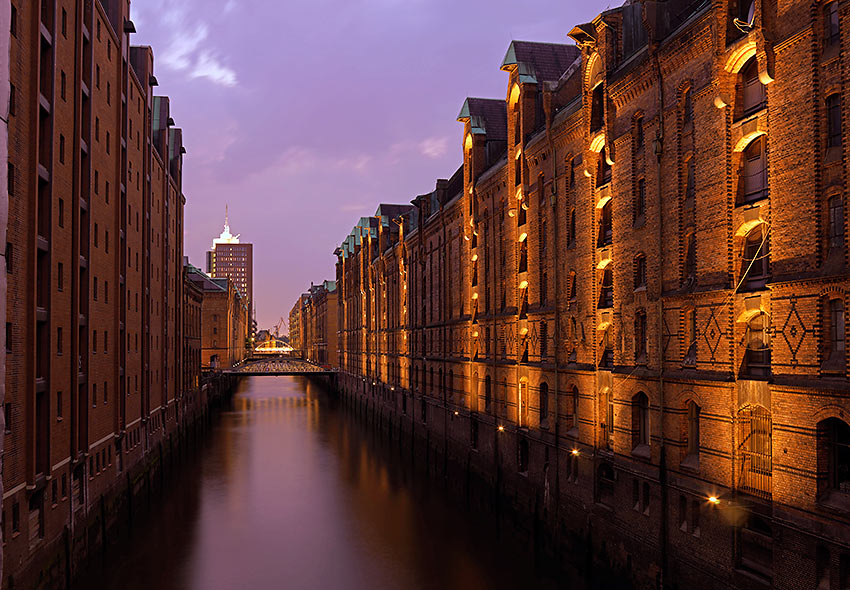
The lower part of the building houses a garage, a wellness and conference area for the Westin, the Kaistudio (quay studio), and an intimate concert hall. Located in the upper levels, are the two symphonic halls of the Elphi and the Westin, along with 45 private residences: The Great Hall with its 2,150 seats in stadium-style configuration stretches from the 12th to the 17th floor and is acoustically isolated from the rest of the building. The small hall with 550 seats is ideal for chamber music and jazz concerts, banquets, and receptions.
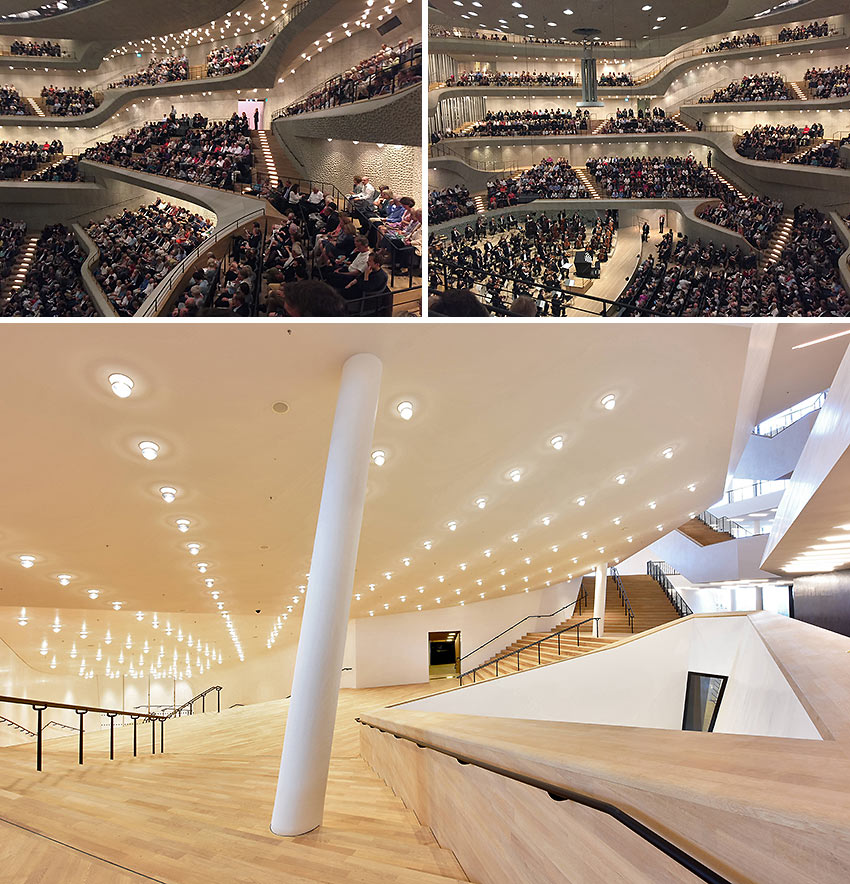
The lobby of the hotel is on level eight, adjoining the imposing plaza for the Elphi, highlighted by a wrap-around viewing promenade.
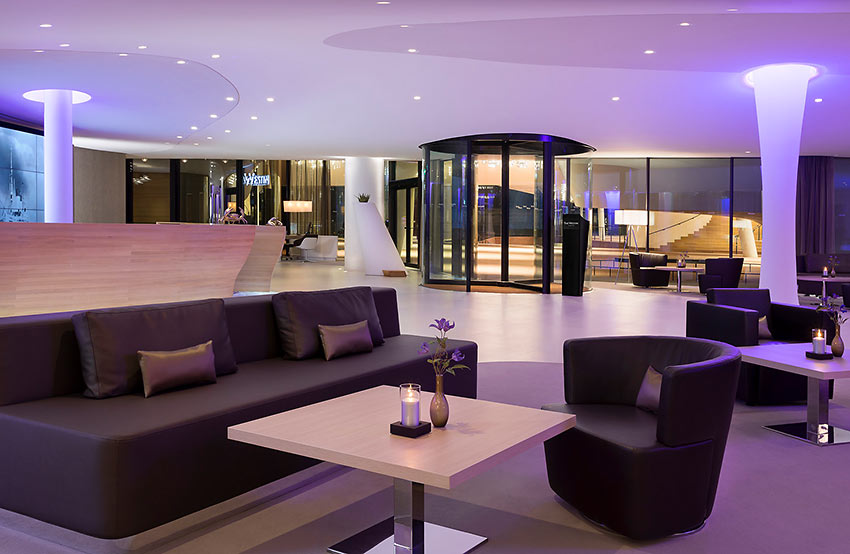
This esplanade, some 120 feet above the river, is open to the public and it’s the ultimate spot to simply sit and contemplate the hectic harbor. The Westin’s Bridge Bar is also on this level, tucked away behind the reception area, and it, too, is a perfect perching post for inhaling a panoramic view, people-watching, and sipping fancy cocktails, some crafted with house-made syrups.
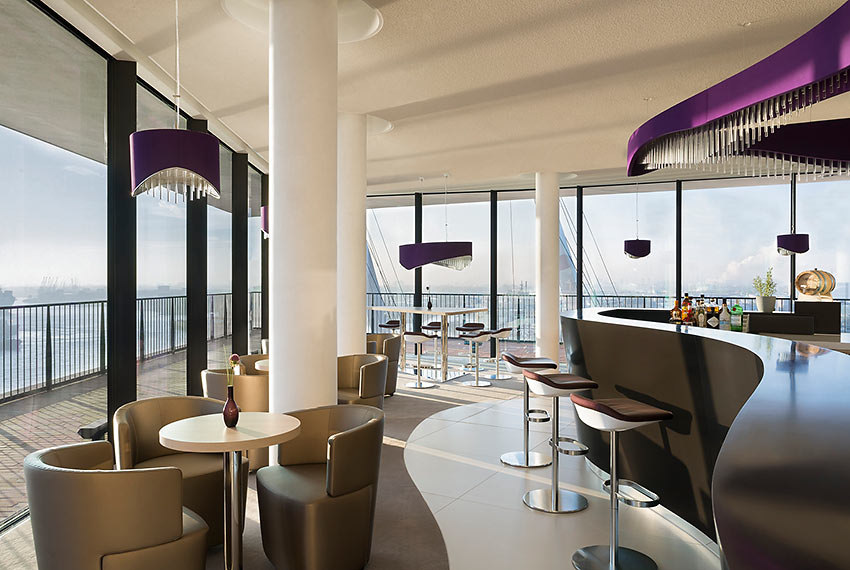
The reception area is at the heart of the hotel and is a pleasant place to plop down and relax. Guests are indulged with freshly brewed coffee, smoothies, and an étagère laden with breakfast pastries baked by the in-house patisserie. Tea is also served here in the afternoon, replete with scones, classic finger sandwiches, and sweets.
On level seven is the hotel’s main restaurant, Saffron, where spices are king, but never overwhelm a dish.
Nuanced flavors are the hallmark of chef Martin Kirchgasser’s menu, which also features an Eat Well concept for people with dietary restrictions or those watching their weight. The kitchen team has also built a Westin SuperFoods Rx menu, with dishes that are made solely with fresh and seasonal ingredients. For pre-concert dining, nothing could be more convenient, and Saffron offers an à la carte menu, along with a three-course, pre-concert meal in its delightfully casual setting… and right after dessert, you are but a grace note away from the Elphi, and can just nip over in a heartbeat, to slip into your seat before the maestro’s baton slices the air for the downbeat.

The spa, Elb Spa (almost 14,000 square feet), houses individual and couples’ treatment rooms, one of Hamburg’s longest indoor swimming pools, saunas, steam baths, two open-air loggias, a lounge, relaxation suite, and workout/fitness areas.
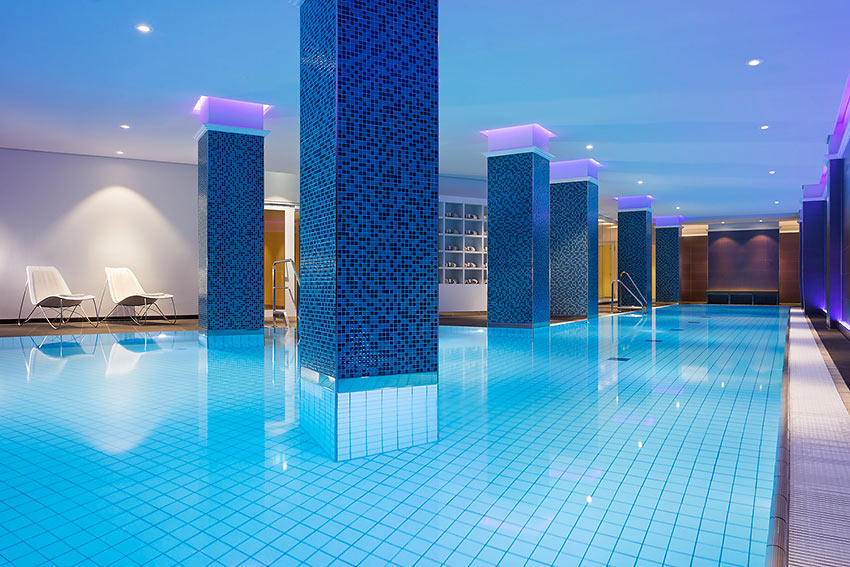
The furnishings of the guest rooms and suites give a nod to purist colorations that are soft-toned and muted, evocative of water, glass, and stone.
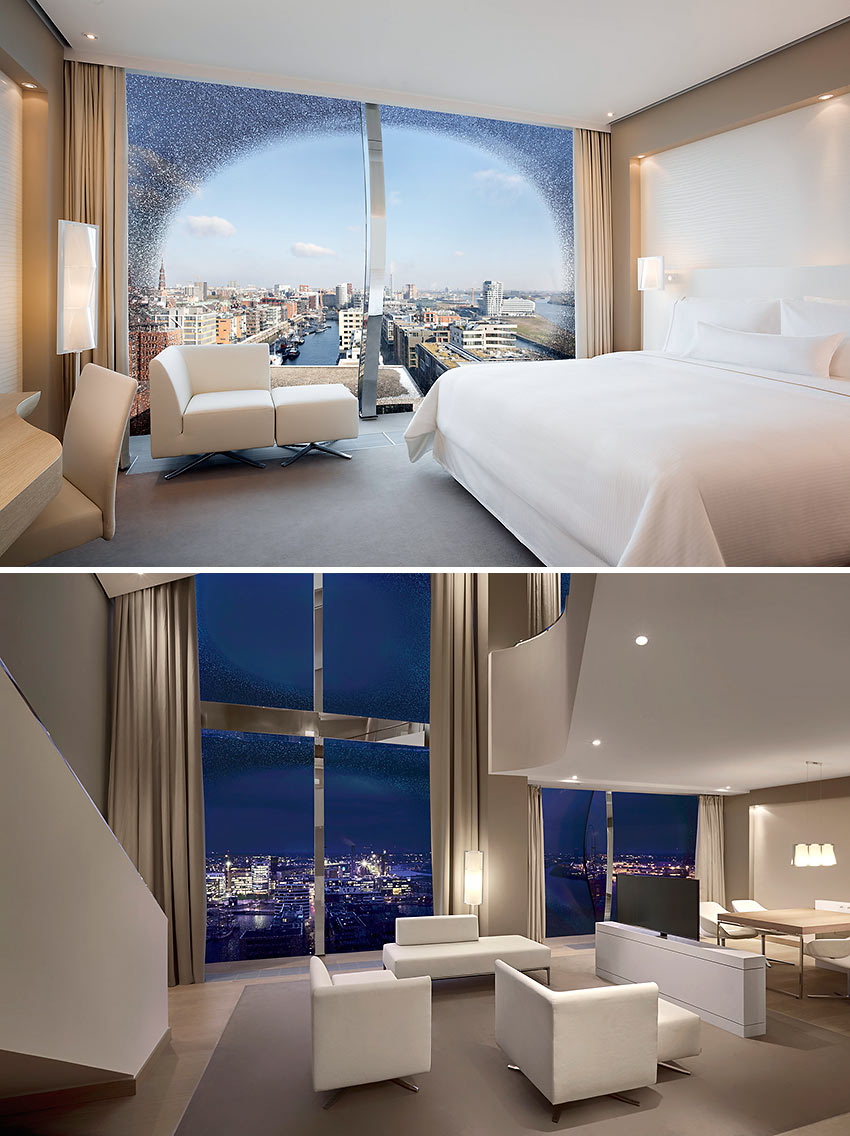
The highlight of each room, however, is the floor-to-ceiling view of the harbor. There are tiny slivers of windows that have reflective surfaces and which open like elongated, elliptical portholes. You get a little light show, as you watch the sunlight dance along the windows, which are all treated to interact with the light and to further protect the building.
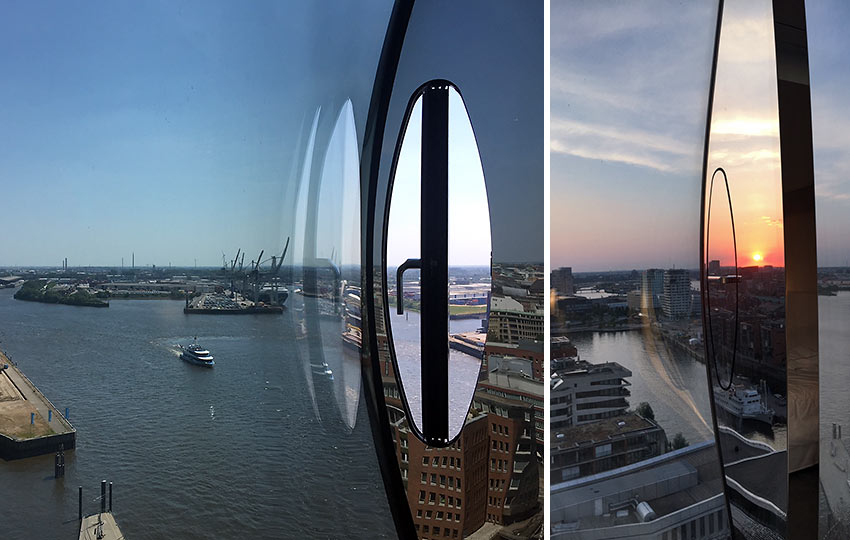
Come for the sunrise, stay for the sunset; but if you must leave — then head straight for the Elphi, a short stroll through the plaza.
The Details: The Westin Hotel Hamburg
© 2018 Ruth J. Katz All Rights Reserved
